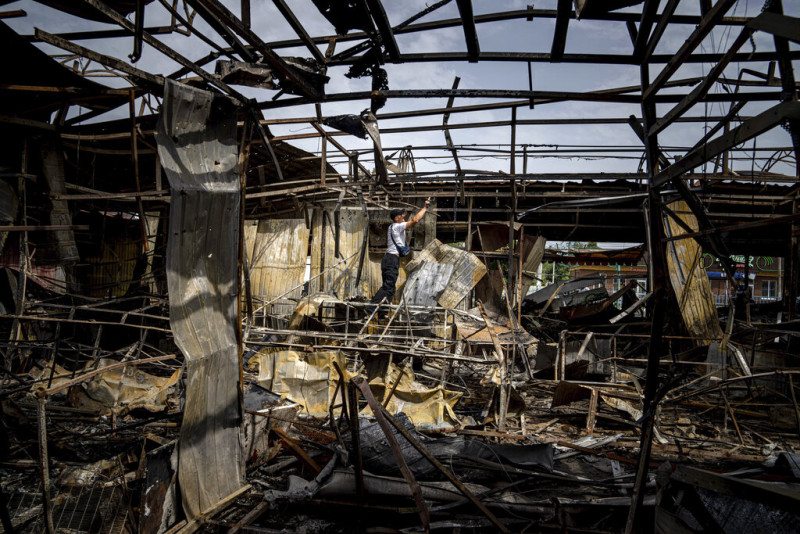40 shells fired on a… typical night – Clashes continue unabated around Europe’s largest nuclear power plant
The Zaporizhia nuclear power plant, with its two imposing towers and six nuclear reactors flanking it, has become famous since it was designated as the most dangerous place on Earth.
On a fairly typical night by the country’s current standards last week, Russians on the left bank of the river where the factory is located fired 40 shells and rockets at Nikopoli, a right-bank city controlled by Ukraine.
The Ukrainians insist they are extremely careful about what they shoot, even when they come under fire from the vicinity of the Zaporizhia plant. On Thursday, Ukraine’s nuclear power company, Energoatom, accused Russia of bringing its Grad multiple launch rocket systems close to reactor 6, which is located next to where spent nuclear fuel is stored.
The walls of the reactors are thick enough to withstand artillery fire, but a direct hit to the spent fuel canisters could well result in the release of radioactive material into the atmosphere.
Ever since they took control of the power plant on Marchthe Russians have begun building a concrete bunker over the spent fuel, but Ukrainian officials say this is being done without following the usual international safety protocols.
At the same time there is a parallel security threat from within the factory itself: the steady attrition of its workforce during these 10 months of conflict. Many key workers have left because of danger to their families or because they refused to work for the Russians. From the workforce of 11,000 people before the full invasion, there are barely any left 4,000. In an attempt to stop the exodus, the Russians circulated lists of factory personnel at all military checkpoints in the area with orders not to allow them to leave, but it was too late to stop a large outflow.
Operating under armed occupation increases stress. Workers at the plant are under constant pressure to sign contracts with Rosatom, the Russian energy company, which means accepting Moscow’s control.
“They take the workers aside one by one, and the first question they ask is where their families are. They exert pressure through their families. One worker was interrogated for eight hours,” said Oleksii Melynchuk, a former worker at the nuclear plant. Despite this pressure, he said, only about 10% of the staff at the plant have signed contracts with Rosatom.
In recent days, the Russians disabled the electronic cards of some of the workers who refused to sign, decreasing even more the number of of available reactor operators.
However, keeping the reactors in this standby state is a difficult and delicate process, which puts a strain on the operators. The situation can get even worse. The Zaporizhia plant is currently connected to the Ukrainian grid, but there have been times when transmission lines have been downed by bombingsforcing the station to fall back on diesel generators to keep the cooling system running and prevent the reactor vessel from collapsing.
If the grid connection is lost again, it would increase the pressure on the already minimal workforce and the generators, which were only designed as temporary backups. They will need maintenance and no one knows how much diesel fuel is left in the factory.
If the diesel generators failed, the collapse would begin in a few hours.
Read the News today and get the latest news.
Follow Skai.gr on Google News and be the first to know all the news.
With a wealth of experience honed over 4+ years in journalism, I bring a seasoned voice to the world of news. Currently, I work as a freelance writer and editor, always seeking new opportunities to tell compelling stories in the field of world news.











